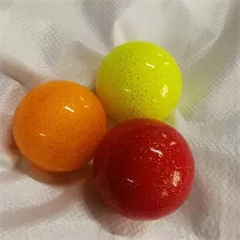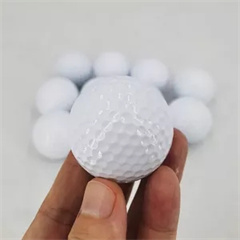Replacing your golf glove at the right time is important to maintain a secure grip, comfort, and control during your rounds. The frequency of replacement can vary depending on several factors, including how often you play, the quality of the glove, and weather conditions. Here are some signs and guidelines to help you determine when to replace your golf glove:
1. Wear and Tear:
- Check for visible signs of wear and tear on your golf glove. Look for:
- Holes or tears in the material.
- Worn-out areas, particularly in the palm and fingers.
- Fading or peeling of the material.
2. Loss of Grip:
- If you notice that your glove is no longer providing a secure grip on the club, it’s time for a replacement. A worn-out glove can lead to club slippage during your swing.
3. Blisters or Discomfort:
- If you start developing blisters or experiencing discomfort on your hand while wearing the glove, it may be a sign that the glove has lost its cushioning and support.
4. Reduced Tackiness:
- Golf gloves have a tackiness or stickiness that helps you maintain control of the club. If this tackiness diminishes significantly, it’s time for a new glove.
5. Loss of Fit:
- Over time, a golf glove may stretch or lose its original shape, leading to an improper fit. If the glove becomes loose or ill-fitting, it should be replaced to maintain a secure hold on the club.
6. Frequency of Play:
- If you play golf frequently, your gloves are likely to wear out more quickly. Competitive golfers or those who practice regularly may need to replace their gloves more often than occasional golfers.
7. Weather Conditions:
- Playing in extreme weather conditions, such as heavy rain, intense heat, or high humidity, can accelerate the wear and deterioration of your glove. In these conditions, you may need to replace your glove sooner.
8. Smell and Hygiene:
- If your golf glove develops an unpleasant odor that persists despite cleaning, it might be time to replace it for hygiene reasons.
9. Trust Your Feel:
- Ultimately, trust your feel and instincts. If you notice that your glove doesn’t feel right or that it’s affecting your performance, it’s a good indicator that it’s time for a new one.
10. Have a Spare Glove: – To ensure you’re always playing with a fresh glove, consider having a spare in your golf bag. This way, you can easily switch to a new glove when needed.
In general, most golfers find that a glove lasts for anywhere from 10 to 20 rounds of golf, but this can vary widely based on the factors mentioned above. Regularly inspect your glove, and when you start noticing any of the signs of wear and reduced performance, be proactive about replacing it. A fresh and well-fitted glove can make a significant difference in your game.


















